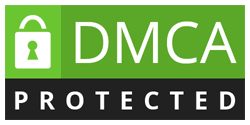Governments around the world are increasingly looking into how emerging technologies can improve the transparency, efficiency, and security of financial systems. One area that is receiving growing attention is the use of smart contracts for government bonds for issuing and managing. These self-executing contracts, which are built on blockchain networks, are revolutionizing traditional bond processes by eliminating intermediaries, automating workflows, and improving compliance.
Smart contracts bring greater accuracy and lower risk to public debt management. By embedding the legal and financial terms of the bond directly into programmable code, governments can increase trust, reduce settlement times, and lower operational costs. This shift is more than just a technological upgrade; it marks a move towards more accountable and accessible public finance systems.
In this blog, we will explore how smart contracts are being developed and implemented for government bonds, the key considerations in building these platforms, and how to develop blockchain-based bond contract solutions that deliver reliable results with real-world impact.
Market Outlook for Smart Contract Adoption
The use of smart contracts is rapidly expanding beyond niche applications. Recent industry reports reveal that the global smart contracts market was valued at USD 684.3 million in 2022, with projections indicating an impressive compound annual growth rate (CAGR) of 82.2 percent from 2023 to 2030. This swift growth reflects growing confidence in the reliability, security, and efficiency that blockchain-based automation offers.
The surge in adoption is especially prominent in the financial sector, where institutions are turning to smart contracts to simplify transactions, reduce costs, and ensure compliance. As governments explore modernizing their public debt systems, smart contracts are emerging as a crucial technology for building the next generation of bond infrastructure.
Real-World Examples of Government Bonds on Blockchain
Several prominent initiatives have already demonstrated the effective use of smart contracts in managing and issuing government bonds:
1. World Bank’s Bond-i
In August 2018, the World Bank launched bond-i, short for “Blockchain Offered New Debt Instrument,” becoming the first bond to be issued, allocated, transferred, and managed using blockchain technology. The two-year bond successfully raised around $110 million and was designed to simplify processes while enhancing transparency in bond issuance.
2. European Investment Bank’s Digital Bond
In April 2021, the European Investment Bank (EIB) issued a €100 million digital bond using the Ethereum blockchain. This move showcased how blockchain technology can improve the speed and efficiency of both bond issuance and settlement, offering a more streamlined approach to traditional financial processes.
3. Berkeley’s Blockchain-Based Minibonds
In 2019, the city of Berkeley, California, began exploring the use of blockchain technology to issue minibonds for funding local community projects. The proposal was designed to let residents invest in municipal bonds with amounts starting as low as $25. This approach aimed to increase public participation in civic development while using blockchain to simplify and securely manage the bond process.
Why Build a Smart Contract Platform for Government Bonds
Building a platform that utilizes smart contracts for government bond issuance offers a significant opportunity for those aiming to lead in the digital public finance space. Here’s why:
- First-Mover Advantage: While governments and financial institutions are actively exploring blockchain solutions, there is still room for innovators to establish themselves early in this growing field.
- Revenue and Licensing Potential: Platforms that facilitate bond issuance, settlement, and investor onboarding can generate revenue through SaaS models, service fees, and long-term government partnerships.
- Global Demand: With increasing interest in secure and efficient debt issuance, there is rising demand for scalable, customizable solutions from both developing and developed nations.
- Proven ROI: Case studies show that automation through smart contracts reduces costs, accelerates processing times, and boosts participation from both retail and institutional investors.
Understanding Smart Contracts and Blockchain for Bonds
Smart contracts and blockchain technology are transforming how government bonds are issued, managed, and settled. Together, they bring automation, transparency, and efficiency to public debt systems.
What Are Smart Contracts?
Smart contracts are self-executing digital agreements that run on blockchain networks. Unlike traditional legal contracts that rely on manual processes or third-party enforcement, smart contracts follow a set of rules written in code and automatically execute once specific conditions are met. These contracts handle tasks like releasing payments, verifying transactions, and updating records without needing an intermediary.
One of the most valuable benefits of smart contracts is their ability to automate financial processes. For instance, if a government bond offers interest payments every quarter, a smart contract can be programmed to handle those payments automatically at the scheduled times. Once deployed, the contract’s terms cannot be changed, offering both transparency and consistency for all parties involved. This reduces the potential for delays or disputes and helps build trust in how the bond operates.
How Blockchain Ensures Transparency, Security, and Immutability?
Blockchain provides a decentralized and tamper-proof system where every transaction is permanently recorded, enhancing trust, traceability, and data integrity across the bond lifecycle.
A. Decentralized and Tamper-Resistant Infrastructure
Blockchain technology operates through a distributed ledger system, where data is stored across a network of nodes rather than on a single central server. This decentralized structure enhances security and reduces the risk of tampering or system failure. For financial applications like government bonds, this infrastructure adds an important layer of trust and reliability.
B. Transparent and Immutable Recordkeeping
Every transaction on the blockchain is recorded with a timestamp and permanently stored. In the context of government bonds, this includes bond issuance, transfers between investors, and interest payments. Since these records cannot be altered after they are confirmed, the system creates a permanent audit trail that regulators and stakeholders can easily verify.
C. Robust Security and Consensus Validation
Blockchain transactions are encrypted and validated through a consensus process before being added to the ledger. This validation helps prevent errors, fraud, and unauthorized changes. The absence of a single point of failure makes the platform more secure against cyberattacks, while the consensus mechanism ensures that the network agrees upon all activity on the blockchain.
Why Government Bonds Are a Perfect Use Case for Smart Contracts?
Government bonds have long been a reliable tool for raising public funds, used to support everything from infrastructure projects to economic development programs. However, the traditional process of issuing and managing bonds involves multiple layers of administration, third-party coordination, and long settlement cycles. Smart contracts can address many of these challenges by streamlining and securing key processes.
- Automated Interest Payments: Smart contracts can be programmed to calculate and distribute interest payments to bondholders on a fixed schedule. This ensures punctual payments without the need for manual processing or reminders.
- Reduced Fraud and Misreporting: The contract terms are coded and stored securely on the blockchain. Once deployed, they cannot be altered, which protects against manipulation and ensures that bond terms are enforced exactly as intended.
- Faster Settlement Times: Traditional bond settlements can take two or more business days to finalize. Blockchain technology allows settlements to occur in near real time, reducing delays, improving liquidity, and cutting down on operational overhead.
Development Steps of a Smart Contract Bond Platform
Launching a smart contract platform for government bonds requires a well-structured process that blends legal clarity, technical expertise, and user-centered design. Each phase is carefully planned to ensure regulatory alignment, platform security, and long-term scalability. Here is a comprehensive overview of the full implementation timeline.
1. Discovery and Planning Phase
This phase builds the strategic foundation for the platform by validating goals, identifying risks, and defining requirements. Consulting with reputed companies like IdeaUsher and their developers and market researchers will help you to go through the proper steps.
Market Research: Study global blockchain bond initiatives such as the World Bank’s Bond-i to assess best practices and potential pitfalls.
Regulatory Review: Collaborate with legal teams to review compliance requirements, including SEC, MiCA, and FATF guidelines, based on your jurisdiction.
Use Case Identification: Decide whether to focus on sovereign, municipal, or corporate bonds. Clearly define the investor group, such as retail or institutional.
Blockchain Evaluation: Assess the benefits of public blockchains like Ethereum or Polygon versus private blockchains such as Hyperledger Fabric or Corda.
Budget and Timeline Planning: Consult with IdeaUsher to estimate development timelines, feature milestones, and projected costs.
2. Technical Design and Architecture
This phase outlines how the system will function, both at the smart contract and application layers.
Smart Contract Design: Define the logic for bond creation, interest distribution, principal repayment, and redemption workflows. Include integration for KYC and AML compliance.
System Architecture Planning
- Frontend: Design wireframes for investor dashboards and issuer portals.
- Backend: Choose frameworks like Node.js or Python to handle API logic and database interactions.
- Blockchain Layer: Write smart contracts in Solidity (Ethereum) or Rust (for blockchains like Solana).
- Oracle Setup: Plan for Chainlink or similar services to fetch real-time market data.
Security and Scalability Planning
- Plan for multi-signature wallets and treasury management.
- Identify the need for Layer 2 solutions if gas optimization is needed.
3. Smart Contract Development
The development team now builds and tests the smart contracts that will power the platform’s financial logic.
Contract Coding and Testing: Develop the smart contract codebase for bond lifecycle management. Run extensive tests on testnets such as Ethereum Goerli or Polygon Mumbai.
Security Audit Preparation: Prepare the codebase for external audits. Engage firms like CertiK or OpenZeppelin to perform formal reviews.
Legal Cross-Check: Confirm that every contract aligns with legal definitions for bond terms, disclosures, and investor protections.
4. Platform Development
With the core logic in place, the team develops the application’s user-facing components.
Investor Portal Development: Build a responsive web or mobile dashboard where users can purchase, track, and manage their bond investments.
Issuer/Admin Portal Development: Create a backend interface for bond issuers and regulators to manage offerings, verify compliance, and oversee system activity.
Third-Party Integrations
- Add payment services like Stripe, Coinbase Commerce, or local fiat on-ramps.
- Integrate onboarding and identity tools like Sumsub, Onfido, or Jumio.
5. Testing and Security Hardening
Before launch, the platform undergoes multiple levels of performance and security testing to ensure reliability.
Smart Contract Load Testing: Stress-test smart contract logic for edge cases, transaction bottlenecks, and time-sensitive payouts.
Platform Penetration Testing: Simulate cyberattacks and data breaches to identify vulnerabilities across APIs, frontends, and databases.
Regulatory Sandbox Testing: If applicable, conduct live tests in a sandbox environment supervised by regulators for approval and feedback.
6. Deployment and Mainnet Launch
The platform goes live, and users are introduced to the real-world application.
Smart Contract Deployment: Deploy the finalized contracts on the selected mainnet, such as Ethereum or Polygon.
Backend Hosting and Setup: Use cloud infrastructure like AWS, Azure, or Google Cloud for reliability, scalability, and uptime.
User Onboarding and Support: Prepare walkthroughs, help center documentation, and onboarding calls for government users and early investors.
7. Post-Launch Support and Scaling
Ongoing support ensures the platform remains secure, legally compliant, and capable of future growth.
Real-Time Monitoring: Continuously monitor transactions, wallet activity, smart contract logs, and system performance.
Governance and Feature Updates: Implement DAO-based voting or internal governance for approving new features, rules, or upgrades.
Institutional Outreach: Engage in partnerships with financial institutions and regulatory bodies to expand adoption and improve credibility.
Work with Ex-MAANG developers to build next-gen apps schedule your consultation now
Design and Architecture of a Smart Contract Bond Platform
Building a smart contract platform for government bonds requires more than technical skills. It calls for a solid understanding of finance, legal compliance, and investor expectations. Success depends on aligning automation with security, transparency, and trust. Here is a quick look at the essential components, workflows, and safeguards needed for a dependable and scalable platform.
Blockchain Choice
The selection of blockchain technology sets the foundation for the platform. Ethereum is often preferred due to its mature ecosystem, smart contract flexibility, and strong integration with decentralized finance. For government or institutional use, permissioned blockchains like Hyperledger Fabric or R3 Corda may be more appropriate. These systems offer greater control, data privacy, and compliance with jurisdiction-specific requirements.
Smart Contract Logic
At the heart of the system lies the smart contract. This is where the rules for bond issuance and management are coded and enforced without manual intervention.
- Bond Issuance: Smart contracts define core details such as bond type, face value, interest rate, maturity date, and total supply. Once the contract is live, these details cannot be changed without proper permissions through a governance layer.
- Automated Payments: Interest payments and principal repayments are automatically processed on the scheduled dates, minimizing administrative delays and ensuring accurate execution.
- KYC and AML Compliance: Smart contracts are connected to third-party identity verification providers to enforce compliance. Only verified investors who pass Know Your Customer and Anti-Money Laundering checks are allowed to interact with the bond contract.
Oracles
To maintain relevance to market conditions, the platform uses oracles that supply external data, such as current interest rates, inflation indexes, or updated legal guidelines. This allows the smart contracts to adapt their logic in real time, whether to recalculate yields or validate investor eligibility.
User Interface
The platform’s front end must provide clarity, ease of use, and real-time updates for both investors and regulators.
- Investor Dashboard: Offers a snapshot of current bond holdings, interest accrued, upcoming payments, and available investment opportunities.
- Admin Panel: Gives authorized personnel control over new bond issuances, investor monitoring, and compliance alerts. This panel ensures regulatory bodies or issuers have oversight and operational tools at their fingertips.
Sample Workflow
- The government publishes the bond issuance details, including interest rate, term, and supply, directly on the blockchain.
- Verified investors purchase the bond using either fiat currency or digital assets. Each transaction is recorded and cannot be modified.
- The smart contract keeps track of time intervals and automatically distributes coupon payments to the investors’ wallets.
- When the bond reaches maturity, the principal amount is automatically returned to the investor.
- All transactions and contract activity are logged transparently and can be reviewed by authorized parties.
Cost of Development for a Smart Contract Bond Platform
The cost of developing a smart contract-based government bond platform depends on complexity, blockchain choice, compliance needs, and scalability. While a basic MVP may be budget-friendly, full-scale, secure, and compliant platforms require larger investments.
| Development Stage | Description | Estimated Cost |
| Discovery and Planning | Market research, regulatory analysis, use-case definition, and roadmap creation | $5,000 to $10,000 |
| Technical Design and Architecture | System architecture, smart contract flow design, and security planning | $10,000 to $20,000 |
| Smart Contract Development | Coding bond logic, automating payments, integrating KYC/AML features | $15,000 to $30,000 |
| Smart Contract Audits (Third-party) | Security audits by firms like CertiK or OpenZeppelin | $10,000 to $25,000 |
| Platform Development (Frontend/Backend) | Investor dashboard, admin panel, APIs, and blockchain integration | $25,000 to $50,000 |
| Testing and Security Hardening | Stress testing, penetration testing, and smart contract validation | $8,000 to $15,000 |
| Deployment and Infrastructure Setup | Mainnet deployment, cloud hosting, and monitoring tool setup | $5,000 to $10,000 |
| Post-Launch Support and Upgrades | Ongoing maintenance, governance updates, and technical support | $2,000 to $5,000 per month |
Note: These are indicative estimates and may vary depending on specific project requirements, compliance jurisdiction, and feature set.
Challenges and Mitigation Strategies
Building a smart contract platform for government bonds offers clear advantages but also presents challenges around regulation, technology, and adoption. Addressing these issues early helps ensure smoother development and long-term success. Here are some key challenges and ways to manage them effectively.
A. Regulatory Uncertainty
Navigating unclear or evolving legal frameworks can delay deployment and introduce compliance risks. Early involvement of legal experts ensures the platform aligns with securities regulations.
Challenge: Government bond platforms operate within strict financial and legal systems. Since blockchain regulation is still evolving in many countries, there may be uncertainty around how tokenized bonds are classified and monitored. This can result in delays or even legal pushback if not properly addressed.
Mitigation Strategy: Bring in regulatory advisors and legal consultants from the start of the project. Conduct a thorough compliance review based on the country or region where the platform will launch. Maintain an open line of communication with financial regulators and work within existing guidelines while preparing for potential updates. In some cases, consider launching under a regulatory sandbox to validate the model before full-scale implementation.
B. Scalability Issues
Public blockchains may struggle with high transaction volumes, impacting performance and user experience. Implementing Layer-2 solutions or choosing a scalable blockchain can resolve these limitations.
Challenge: Public blockchains like Ethereum often experience congestion, especially during high activity periods. This can lead to slow transaction speeds and elevated gas fees, which are not ideal for a platform handling frequent bond issuances and settlements.
Mitigation Strategy: Plan for scalability from the early design phase. Use Layer 2 technologies like rollups or sidechains to increase processing speed and reduce transaction costs. If working with a high volume of transactions, explore scalable alternatives such as Solana or consider building on permissioned blockchains like Hyperledger Fabric, which can offer more consistent performance in enterprise settings.
C. Adoption Barriers
Lack of technical familiarity among stakeholders can hinder platform uptake. Ongoing education, training, and showcasing successful pilots help build trust and drive adoption.
Challenge: Some stakeholders, particularly in government or traditional finance, may be unfamiliar or uncomfortable with blockchain technology. This hesitation can slow down decision-making and reduce overall platform adoption, especially if users perceive it as overly technical or risky.
Mitigation Strategy: Create a comprehensive onboarding strategy that includes hands-on training, product demonstrations, and support materials tailored to different user groups. Build a pilot version of the platform for early use by a small, controlled audience. Share success stories and performance metrics to build credibility. Clear communication and education will go a long way in gaining trust and driving adoption.
Future of Smart Contract-Based Government Bonds
The use of smart contracts in government bond systems is still developing, but the potential ahead is significant. As blockchain technology continues to advance, new possibilities are emerging that will make bond markets more inclusive, efficient, and intelligent. Below are key trends that could shape the future of this space.
1. Fractionalized Bonds to Expand Access
One of the most impactful innovations is the ability to issue bonds in smaller, fractional units. This feature allows governments to make their bonds more accessible by lowering the minimum investment amount. Individuals who previously could not afford to invest in traditional bonds can now participate with modest sums. This model opens the door to financial inclusion, enabling first-time investors and people in underserved communities to gain exposure to government-backed financial instruments.
2. Cross-Border Bond Trading Made Easier
Today, trading government bonds across countries involves complex steps such as currency conversions, settlement delays, and compliance with local financial regulations. Smart contract platforms can streamline this process. By automating key workflows such as currency settlement and jurisdiction-specific compliance checks, these platforms make international bond trading faster, more cost-effective, and less dependent on intermediaries. The result is a more open and globally connected bond market.
3. Predictive Intelligence through AI
The future of smart contract platforms will likely involve deeper integration with artificial intelligence. AI can analyze large volumes of data, including economic indicators and investor behavior, to forecast bond prices, detect risk patterns, and suggest the best timing for bond issuance. When this intelligence is linked with blockchain oracles and smart contracts, platforms can become more adaptive. Governments will be able to make data-informed decisions in real time, improving the management of public debt.
Conclusion
Smart contracts are changing the way government bonds are issued, managed, and settled. By bringing together automation, transparency, and strong security, they help solve many of the challenges that exist in traditional public debt systems. When designed and implemented effectively, a smart contract-based platform can offer meaningful benefits to issuers, regulators, and investors. As more governments and financial institutions explore blockchain technology, there is a clear opportunity to modernize how bonds are handled. Platforms that focus on scalability, regulatory compliance, and a smooth user experience will be in a strong position to lead this shift and shape the future of public finance.
Develop a Platform for Smart Contract for Government Bonds with IdeaUsher!
With over 500,000 hours of blockchain and fintech development expertise, our team of ex-FAANG/MAANG engineers builds secure, scalable, and regulation-ready smart contract solutions for government and institutional finance. At Idea Usher, we specialize in designing smart contract platforms that automate bond issuance, streamline public debt management, and ensure real-time compliance with evolving financial regulations. From automated interest payouts to immutable audit trails, our systems are engineered to deliver transparency, efficiency, and security at every stage of the bond lifecycle. Partner with Idea Usher to bring next-generation innovation to public finance and transform how government bonds are issued, managed, and traded.
FAQs
Q.1. How are smart contracts used in government bonds?
Smart contracts manage the entire lifecycle of government bonds by embedding key terms such as interest rates, maturity dates, and repayment schedules directly into code on a blockchain. Once deployed, these contracts automatically process interest payments, execute redemptions when the bond matures, and ensure that regulatory rules are followed. By automating these functions, smart contracts remove the need for intermediaries and reduce the chances of manual errors.
Q.2. What are the benefits of using blockchain for public debt contracts?
Blockchain technology enhances public debt systems by offering a secure, transparent, and tamper-resistant environment. Each transaction is recorded on a distributed ledger that is accessible for audit and cannot be altered after confirmation. This transparency helps build public trust in how bonds are issued and managed. Additionally, blockchain speeds up settlements and lowers operational costs when compared to traditional finance infrastructure.
Q.3. What blockchains are best suited for government bond platforms?
Ethereum is a popular choice for its mature smart contract capabilities and large developer community. However, for governments or institutions that prioritize privacy and stricter access control, permissioned blockchains such as Hyperledger Fabric or R3 Corda are often more suitable. These platforms allow greater customization and are typically better aligned with institutional compliance needs.
Q.4. How much does it cost to develop a smart contract bond platform?
The cost to develop a smart contract platform for government bonds generally ranges between $10,000 and $100,000. This range depends on several factors, including how complex the platform is, the level of compliance integration required, the blockchain infrastructure used, and the scope of security audits. The total also includes phases such as planning, user interface design, backend and frontend development, testing, and post-launch maintenance.























